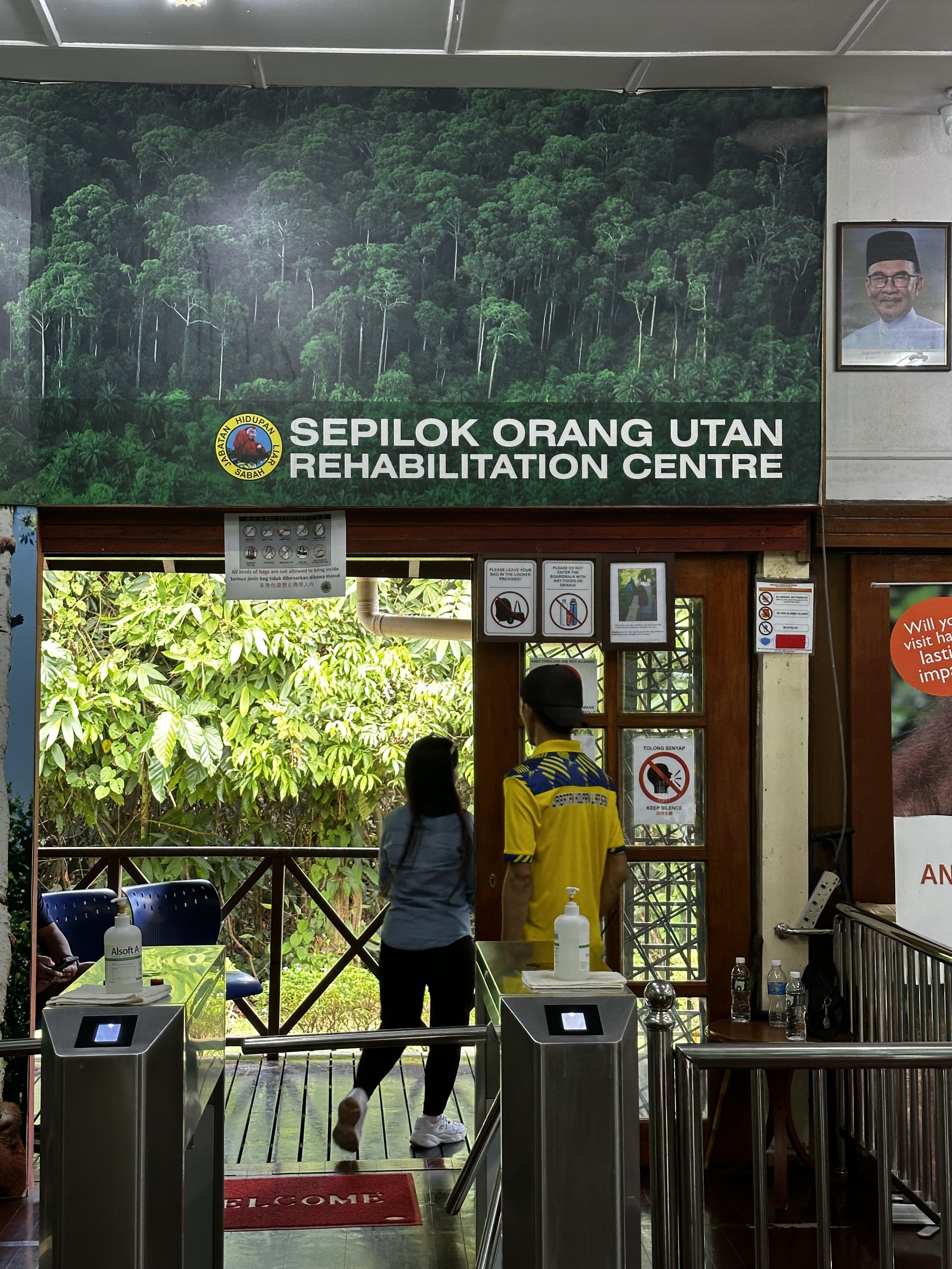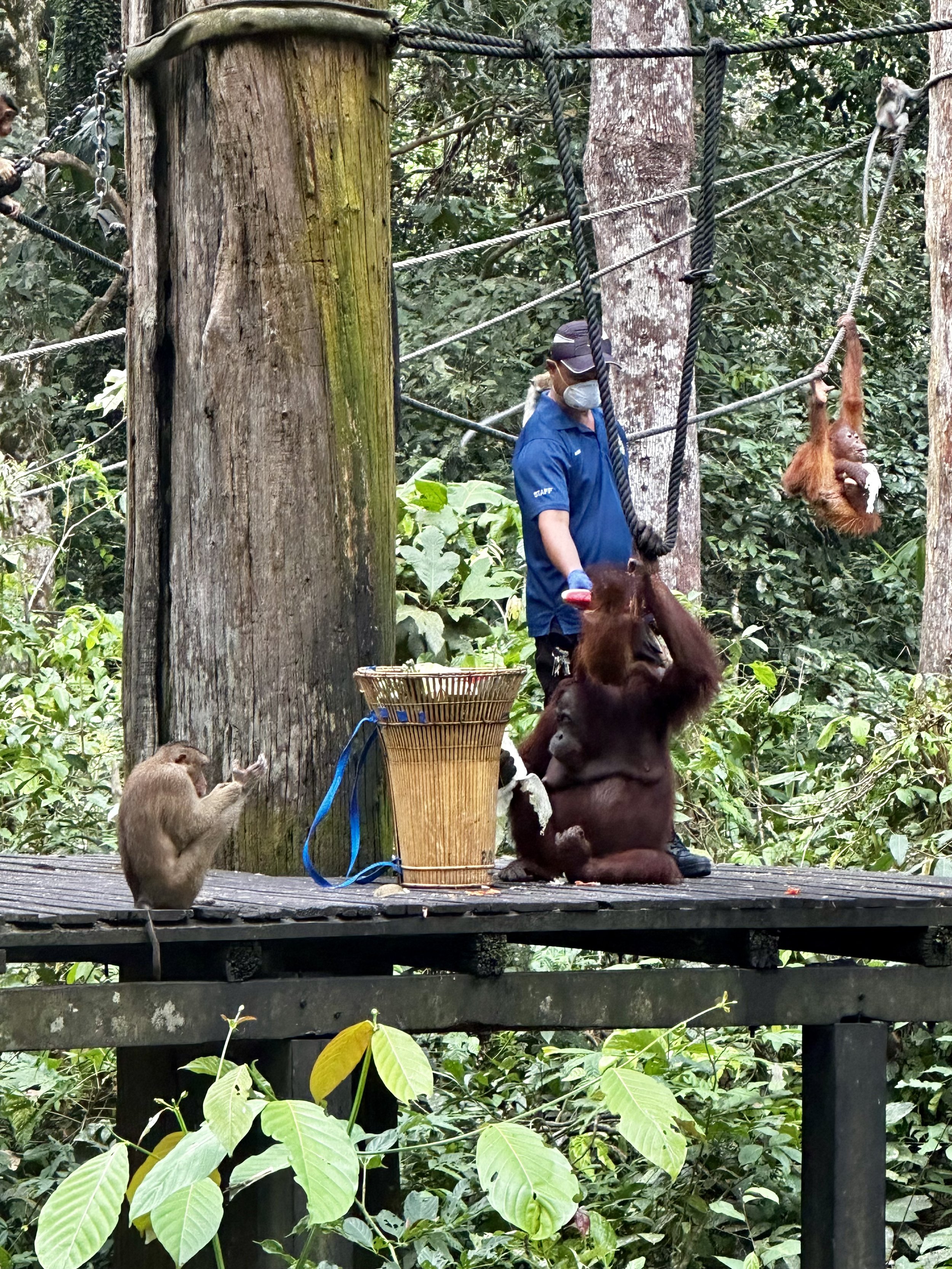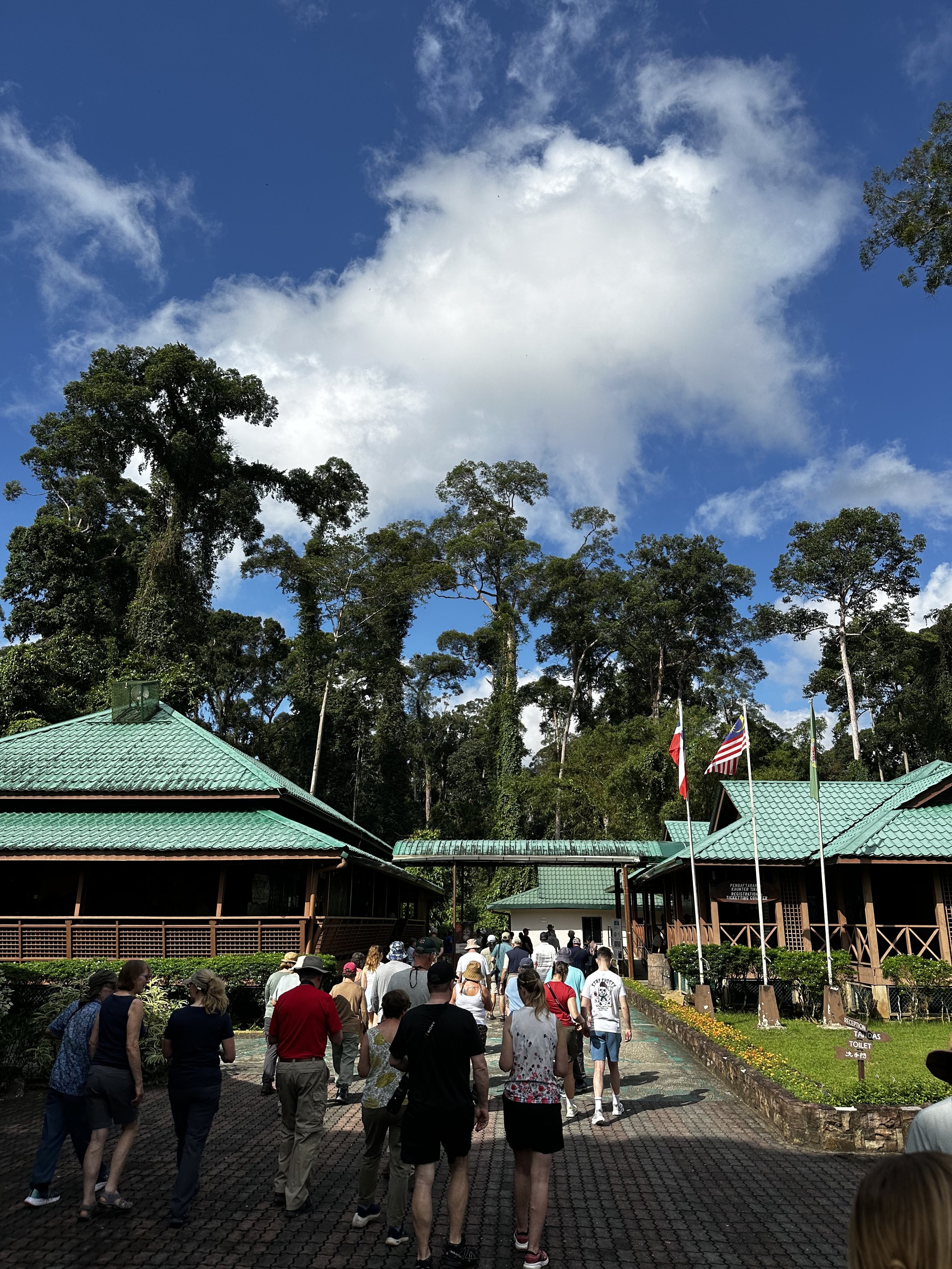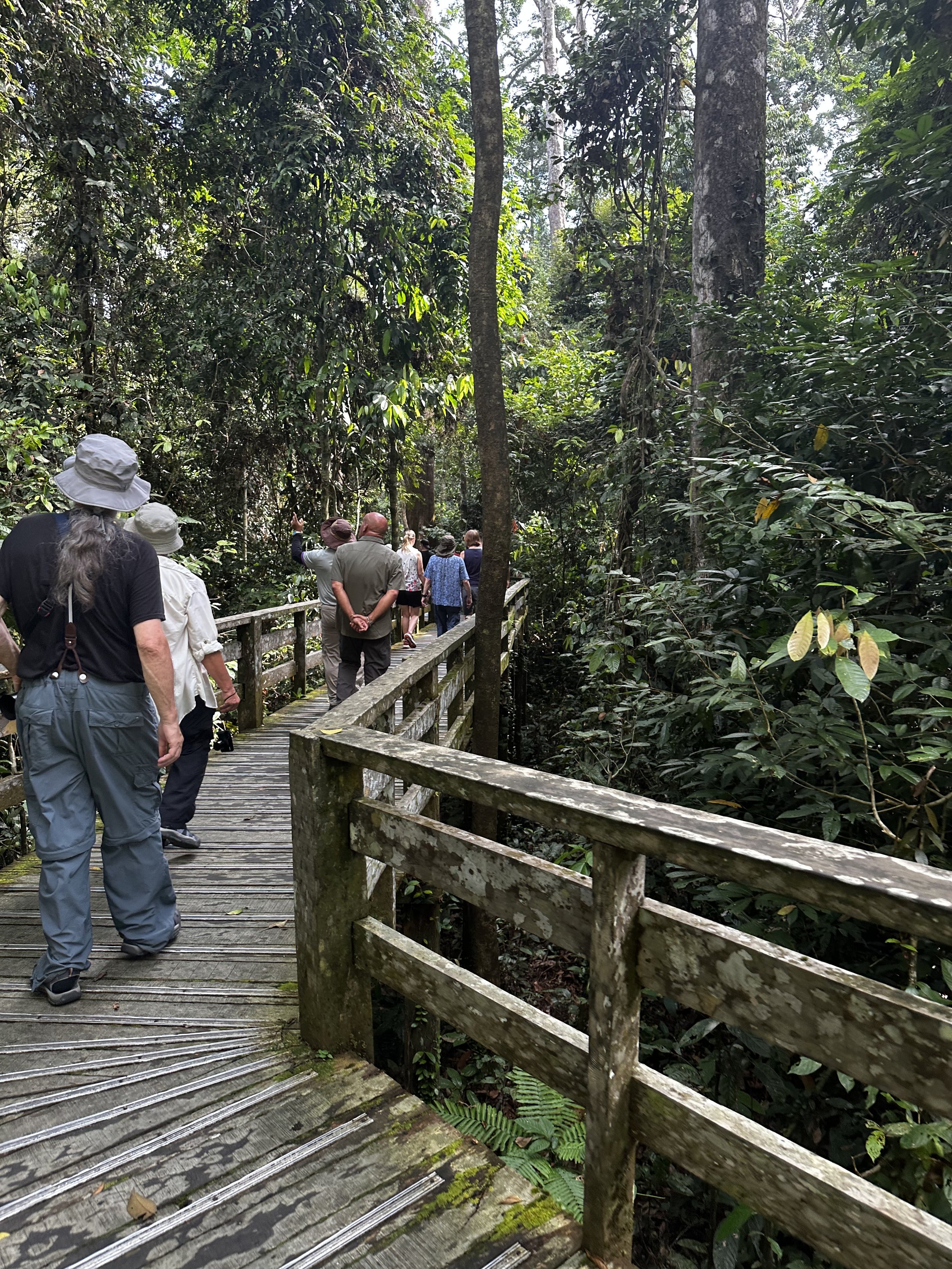Protecting Borneo’s Orangutans: Sepilok Orangutan Rehabilitation Centre Top Tips
If you're travelling to Borneo, chances are that seeing an orangutan is high on your bucket list. Witnessing one of these iconic apes in their natural habitat is an awe-inspiring experience. If you didn't manage to catch a glimpse of these impressive animals during a safari cruise along the Kinabatagan River, then visiting the Sepilok Orangutan Rehabilitation Centre in Sandakan is your next best option for ticking off your list.
Driving to the sanctuary, oil palm plantations extend as far as you can see across the landscape. It’s a sombre sight. When you remember that jungle once stood where these plantations now stand, it demonstrates a grave reminder of humanity's impact on our natural world. Throughout my trip to Borneo, I had many conflicting thoughts about ensuring sustainable economic and social development for local people without compromising on space and protection for wildlife. It's a problematic quandary that can be even trickier to answer in practice.
Orangutans are among the world's most endangered primates. All three species—Bornean, Sumatran, and Tapanuli—are listed as critically endangered. Orangutans are threatened by habitat loss and fragmentation as their forest habitat is cleared for agriculture (predominantly palm oil plantations) and logging. Hunting, the illegal wildlife trade, and climate change are also threats.
What is the Sepilok Orangutan Rehabilitation Centre?
Established in 1964, the Sepilok Orangutan Rehabilitation Centre was the first centre of its kind in the world dedicated to rehabilitating orangutans. With the future of orangutans handing in the balance, there is no doubt that the work they are doing here to conserve orangutans is crucial. The centre rescues orphaned, injured and displaced orangutans with the ultimate aim of releasing them back into the wild. At any one time there are between 60 - 80 orangutans living independently on the reserve and around 25 orphaned orangutans in the centres care. The older orange fuzzy furred apes are free to roam throughout the 43 km sq. Sepilok-Kabili forest reserve as they please. It is owned and run by the Sabah Wildlife Department.
Top Tips for Visiting the Sepilok Orangutan Rehabilitation Centre
Cash only for tickets - unless you’re on an externally organised group tour, in which case your guide should organise tickets for you. It costs 30 MYR for foreign tourists.
You can’t take large bags into the centre. Reasonably priced lockers are provided for you to keep your personal items safe during your visit.
Gates open at 9am and 2pm for each session - the centre is closed between 12pm and 2pm. Aim to arrive 5-10mins before 9am to beat the ticket rush. Once inside, go to the nursery first to grab an unobstructed view.
Make your way to the feeding platform 20-30 minutes before feeding times. Everyday at 10am and 3pm park rangers arrive at the centres feeding platform with a bounty of sweet fruits like bananas and watermelons for the orangutans. As the orangutans are effectively wild, there are no guarantees how many will show up to the feeding platform. During my visit, we were blessed to see a mother orangutan and her sweet baby at feeding time. It will be busy here and it can be hard to find an unobstructed view if you arrive late. Remember that the rangers do not control how many orangutans turn up to feed. Ideally, rehabilitated orangutans should be foraging for food on their own where possible.
Manage your gift shop expectations. I was hoping to buy several gifts here for friends and family to support the centre, but sadly there isn’t much on offer. However, I highly recommend visiting the Orangutan Appeal UK shop for donations to the centre like fruit, medical visits, milk and even climbing lessons for the oranguatans.
My experience at the Sepilok Orangutan Rehabilitation Centre
While the centre provided opportunities to learn more about their work and see orangutans up close, for me, the Sepilok Orangutan Rehabilitation Centre did not live up to my expectations. I wish I didn’t have to write that, but I like to keep it real on this blog and to always share my genuine opinions. Here’s why I left feeling this way: at times, the centre felt very zoo-like and was easily the most crowded experience I had in Sabah. There were hoards of people everywhere. Personally, overcrowding often ruins the experience for me. Maybe I would have felt differently if I hadn't been so lucky to encounter wild orangutans along the Kinabatangan River. That said, beyond the volume of tourists, the centre is a testament to its conservation efforts to safeguard the future of orangutans in Borneo.
As a conservationist, I believe it's vitally important that centres like this continue to receive visitors to fund their conservation efforts and increase awareness of the species they're trying to conserve. The centre is well-designed, with a long walkway throughout the reserve that offers the orangutans complete freedom to roam as they please. It's easy to see that this is a trip highlight for many visitors to Borneo and I have no regrets about visiting the centre.
With Orangutan Appeal UK, you can adopt an orangutan at the centre for a year. I adopted a baby orangutan called Hujan, who didn't have the easiest start in life. Her name means 'rain' in Malay, as she was born on an unseasonably rainy night. The Rehabilitation Centre takes care of orphaned, injured and displaced orangutans, often as a result of oil palm plantations, logging or the illegal pet trade. Any support that we can provide them with is undoubtedly appreciated.
Overall, I recommend spending the morning or afternoon at the Sepilok Orangutan Rehabilitation Centre. With the Bornean Sun Bear Conservation Centre only next door, you can easily tick both must-see places off your list in one day. More on that in the next blog.








